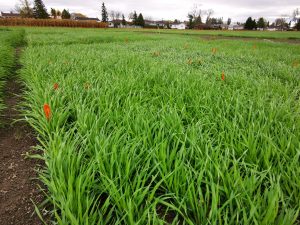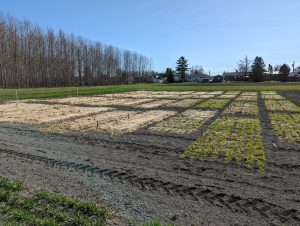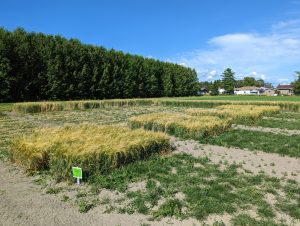Written by Haylee Archambault, NOFIA summer student, on behalf of the Northeastern Regional Communications Coordinator
While winter cereal crops are not new to Northern Ontario, they are breaking ground in research as a potential cover crop for growers. Winter barley cover crops are cool season annual cereal grains, which, when planted, provide erosion control, weed suppression, add organic matter, and act as a topsoil protectant crop during times of drought. Winter barley has its challenges, including poor winter survival and a lack of new variety development. However, recent interest in this winter cereal as a cover crop has brought new genetics to Northeastern Ontario in hopes of making it a viable option for cereal growers.
University of Guelph and the Northern Ontario Farm Innovation Alliance (NOFIA) have conducted research at the Ontario Crops Research Centre (OCRC) in Emo and New Liskeard to assess whether winter barley can be a sustainable cover crop in northern climates. In this trial, researchers have collected data with emphasis on establishment, winter survivability, and yield potential.
In discussion with Nathan Mountain, Cropping Systems Research Technician at OCRC – New Liskeard, Ruzena and Calypso were the winter barley varieties used in this trial. Planting dates spanned four weeks: August 24, August 31, September 7, and September 13.
Plots planted within the first three weeks had similar winter survival, consensus was poor. Week 4 planting date had higher survival for both Ruzena and Calypso, overall Ruzena had the highest winter survivability averaging 71% compared to Calypso averaging 32%. Even though Calypso had a low survival rate, the variation in yield between plots was only an 11% difference. For instance, Calypso produced ~75 bushels per acre and Ruzena had yields averaging 140 bushels per acre. Both varieties had similar protein percentages of ~16% with
Calypso having a slightly higher protein average of 16.8%. Another similarity between the varieties was noticed in stand counts when comparing both Ruzena and Calypso. The unusually beautiful fall weather in Northeastern Ontario created challenges, with too much growth prior to dormancy over winter, likely leading to the increased winterkill observed. The later planted varieties did the best because of this.
Even though there are many environmental benefits associated with winter barley as a cover crop, one challenge affecting its ‘comeback’ to northeastern Ontario is the difficulty to market the crop within the region. Therefore, it is advised that before growers plant their crop, they have an end market in place. Overall, a good starting point is to getting in touch with neighbouring elevators and seed vendors.


